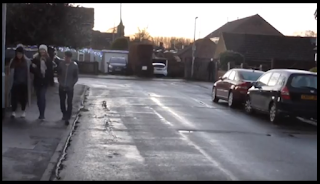Sharpie magazine cover 2
This is the final draft for my magazine cover. Not much has changed from the first apart from the pug on the left hand side. Originally there was a picture of an upcoming film alongside a piece of text, which was all inside a box with distorted sides.
Following feedback I got, I removed this and replaced it with something that doesn't look so out of place/bizarre. It now gives more detail without taking away from the whole cover. It is also eye-catching enough to draw attention, whilst keeping the main focus on Sharpie.































